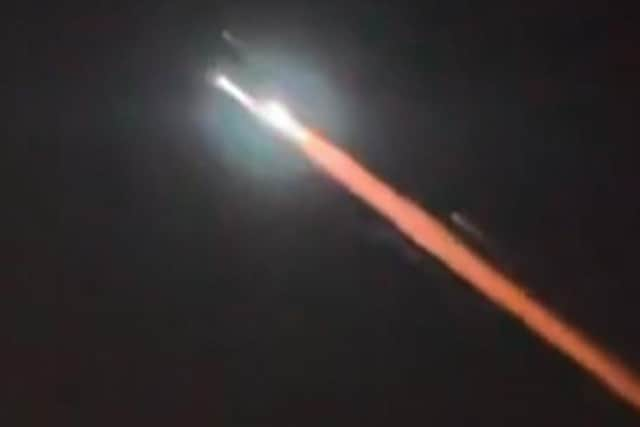Melbourne meteor: Russian rocket re-entry lights up Australian sky with amazing space debris spectacle
and live on Freeview channel 276
On Monday evening (7 August), Melbourne residents reported seeing flaming debris scorch across the night sky, prompting a flurry of tweets on social media asking if it was a meteor.
But according to a statement from the Australian Space Agency, the bright trails of light were mostly likely caused by a Russian rocket re-entering the Earth's atmosphere.
Advertisement
Hide AdAdvertisement
Hide AdWhen a rocket or satellite re-enters the Earth's atmosphere, it can create a bright and visible trail in the sky due to the intense heat generated by friction with the air.
The mystery beam of light burned for almost a minute just after midnight, before shattering into glowing fragments in the Victoria sky. A Soyuz-2 rocket had been launched earlier that day from the Plesetsk Cosmodrome north of Moscow, carrying a new global navigation satellite into orbit.
The sighting was reported as far away as Bendigo, two hours north of Melbourne, but the Australian Space Agency said the rocket's remaining components would safely splash down in the ocean off the south-east coast of Tasmania.


Experts quickly determined that the lights were caused by space junk burning up due to friction as it impacted the atmosphere, with the Australian Space Agency confirming it was keeping an eye on public reports, including footage from social media, but didn't anticipate any more debris to re-enter the atmosphere.
Advertisement
Hide AdAdvertisement
Hide Ad“It is really quite extraordinary,” Professor Alan Duffy, astronomer at Swinburne University, told 3AW radio. “It is the biggest light show I’ve ever seen, in terms of a re-entry of some kind of material from orbit.”
Duffy added that the light could not have come from natural materials like rocky space debris, and that the colours in the light fragments suggested that burning polymers or metals were present. Natural meteors are more likely to glow green or blue due to the chemical components they contain.
Burning rocket debris re-entering Earth's atmosphere and becoming visible from the ground is a relatively rare occurrence which typically happens only a few times a year.
The majority of space debris burns up completely during re-entry and doesn't create visible fireballs, but larger objects or those made of particularly heat-resistant materials are more likely to produce visible effects.
Space agencies and organisations around the world closely track the trajectories of space debris to minimise the risks of it causing harm on the ground.
Comment Guidelines
National World encourages reader discussion on our stories. User feedback, insights and back-and-forth exchanges add a rich layer of context to reporting. Please review our Community Guidelines before commenting.
